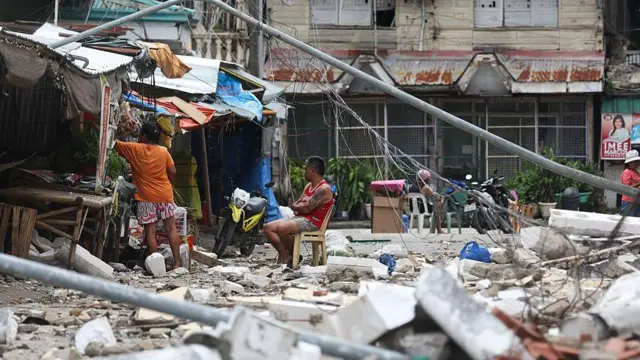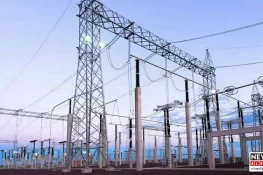Strong Tremors Hit at Night
A powerful earthquake measuring 6.9 on the Richter scale struck the central Philippines late Saturday night, killing at least 22 people and injuring dozens more. According to local officials, the tremors hit around 10 p.m. local time at a shallow depth of 10 kilometers.
Residents described scenes of chaos as buildings shook violently. Many people fled their homes and rushed into the streets, fearing aftershocks. Emergency services reported that several houses and commercial structures were completely flattened, while many others sustained severe damage.
Aftershocks Deepen Fear
Authorities confirmed that multiple aftershocks were felt soon after the initial quake. These secondary tremors added to public panic and further complicated rescue efforts.
The Philippine Institute of Volcanology and Seismology (Phivolcs) has warned that aftershocks could continue for several days. Officials have urged residents to remain alert and avoid unsafe buildings.
Rising Casualty Figures
Initial reports put the death toll at 22, but rescue workers fear the number may rise as more victims are pulled from collapsed structures. Over 30 people have been hospitalized with injuries ranging from fractures to head trauma.
Hospitals in the affected provinces are under pressure as they treat survivors. Medical teams have been dispatched from nearby cities to support overwhelmed health facilities.
Emergency Response Underway
The government has declared a state of emergency in the worst-hit areas. Rescue agencies, assisted by the military and local volunteers, are using heavy machinery to clear debris and search for survivors.
President Ferdinand Marcos Jr. has directed national disaster teams to provide immediate assistance, stressing that “every effort must be made to save lives.” Relief supplies including tents, food, and drinking water are being distributed to displaced families.
Local schools and sports complexes have been converted into temporary shelters for those who lost their homes. Officials estimate that hundreds of families have been displaced.
Philippines’ Vulnerability to Earthquakes
The Philippines lies on the so-called “Ring of Fire”, a vast seismically active region encircling the Pacific Ocean. In recent months, other Asian countries have also faced deadly tremors, including a devastating earthquake in Afghanistan that killed over 800 people. This zone is responsible for about 90% of the world’s earthquakes.
The country frequently experiences strong quakes. In 2013, a magnitude 7.1 earthquake struck Bohol province, killing more than 220 people and destroying tens of thousands of homes. More recently, in 2019, a series of powerful tremors hit Mindanao, killing at least 20 people.
Global and Regional Reactions
Neighboring countries have expressed solidarity with Manila. Aid agencies, including the Red Cross and the United Nations humanitarian office, have offered support.
Japan, which also lies along the Pacific Ring of Fire, has pledged technical assistance in search and rescue operations. The European Union has said it is monitoring the situation and preparing potential emergency aid packages.
What Comes Next
Rescue efforts are expected to continue for days as officials race against time to locate survivors trapped under rubble. Authorities have warned that many buildings remain unsafe, and engineers are conducting rapid structural assessments.
For residents of central Philippines, the immediate challenge is survival and recovery. Yet, for the country as a whole, the disaster highlights once again its vulnerability to natural calamities — and the urgent need for stronger preparedness measures.















